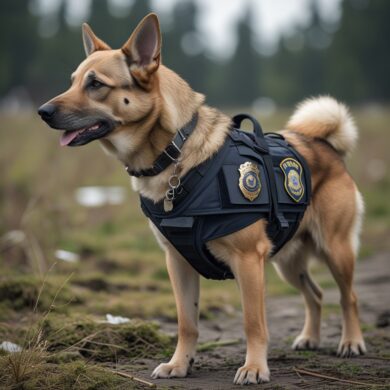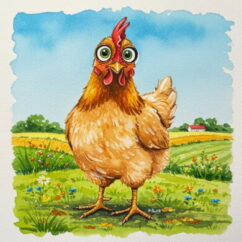The Differences Between the Sense of Smell in Dogs and Pigs
Sensitivity of Their Sense of Smell
Dogs
A dog's sense of smell is thousands to a million times more sensitive than that of humans. They are particularly adept at detecting organic compounds like acetic acid and fatty acids.
The olfactory epithelium (the tissue in the nose responsible for detecting smells) in dogs is 40–50 times larger than in humans, and they have a significantly higher number of olfactory receptor cells. This allows them to detect even the faintest odors. For example, dogs can track a scent trail left four days ago over a distance of 160 kilometers (100 miles) or detect a female in heat from 8 kilometers (5 miles) away.[1]
Pigs
Pigs also have an excellent sense of smell, particularly for detecting underground scents. They are famous for their ability to locate truffles, a type of rare and expensive mushroom. This is because truffles emit a scent similar to the pheromones of male pigs, which female pigs are naturally drawn to.
Pigs' sense of smell has evolved to help them find food, such as roots and plants buried deep in the soil.[2]
Uses of Their Sense of Smell
Dogs
Dogs' olfactory abilities are utilized in a wide range of fields:
Police dogs: Tracking criminals and detecting narcotics.
Medical detection dogs: Identifying diseases like cancer or low blood sugar levels.
Search and rescue dogs: Locating survivors in disaster zones.
Pigs
Pigs' sense of smell is primarily used for food-related purposes:
Truffle hunting: Locating high-value truffles buried underground.

Created with Playground AI
Specialized Areas of Expertise
- Dogs
Dogs excel at distinguishing specific odors and can be trained to identify a wide variety of scents. For example, they can detect early signs of diseases or even human emotions, such as stress or relaxation, through smell. - Pigs
Pigs are particularly skilled at detecting food-related scents, especially those buried underground. However, their strong attraction to food-related smells has made them less suitable for tasks like narcotics detection, as they may get distracted or eat the target substance.

How Their Sense of Smell Works
- Dogs
Dogs' noses are moist, which helps capture scent molecules more effectively. They can also move their nostrils independently, allowing them to pinpoint the direction of a scent. - Pigs
Pigs have strong, flexible snouts designed for digging into the ground. Their noses are not only sensitive but also highly dexterous, capable of performing tasks like unlocking gates.

References
[1] https://magazine.cainz.com/wanqol/articles/dog_nose_01
[2] https://www.jstage.jst.go.jp/article/oubutsu/83/1/83_56/_pdf


